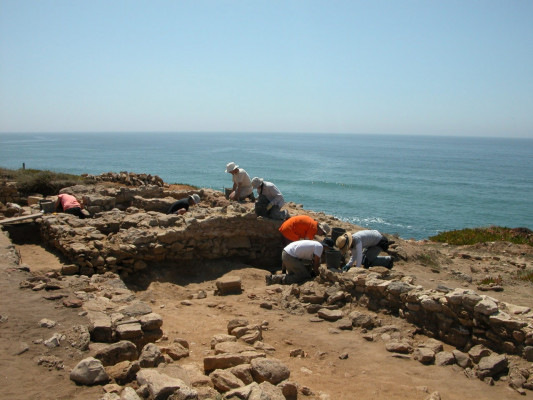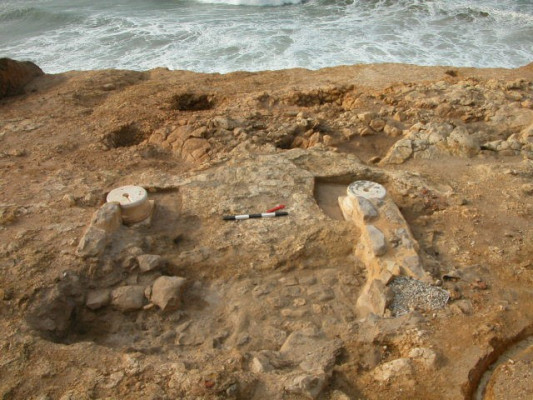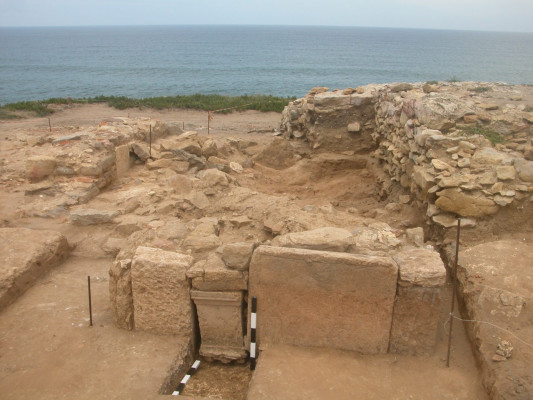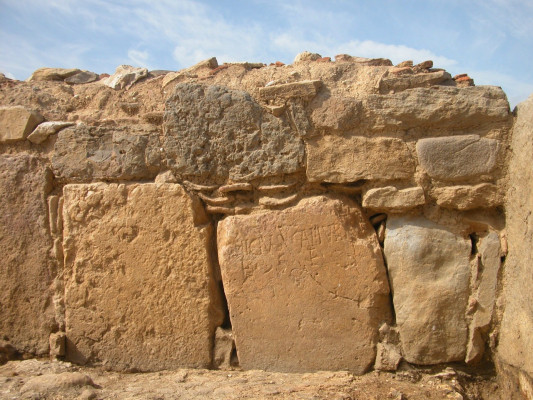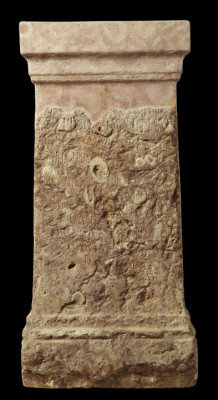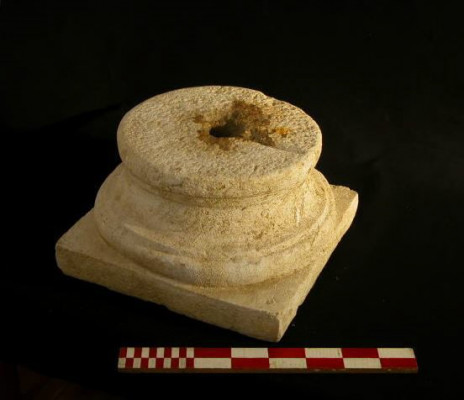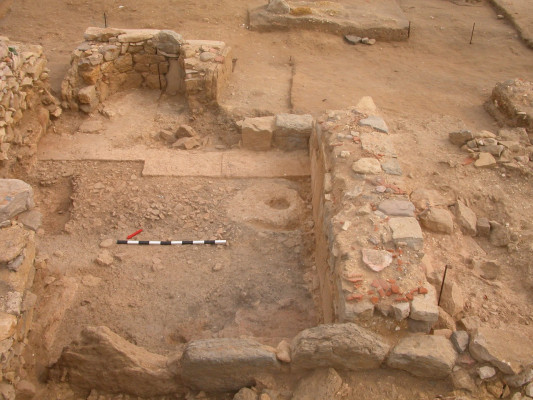Choose locations to explore
Select the desired period of history
2nd - 5th century AD
Sanctuary (Alto da Vigia)
Roman sanctuary, near the mouth of the River Colares, dedicated to the Sun and Moon, according to oldest reports, from the early 16th century. Several votive inscriptions, including an arula (small altar) in Greek, and architectural remains confirm the existence, in the area, of a monumental Roman sanctuary. Its notable importance during the empire is evidenced by all the hitherto known altars having been placed not by private devotees or even municipal magistrates, but by imperial legates (high-ranking military officers) or governors of Lusitania, that is by notable figures of the equestrian and senatorial classes.
Add to route
Typology
Temple / Sanctuary, Epigraphs
Archeological interventions
2008 - 2017
Suggested reading
Ollanda, F. (1571) - [fac-simile] Da fabrica que faleçe ha çidade de Lysboa. In Segurado, J. (1970) - Francisco d'Ollanda. Lisboa, pp.67-168.
Cardim-Ribeiro, J. - (1994) - Felicitas Iulia Olisipo: algumas considerações em torno do catálogo Lisboa Subterrânea. Al-madan. Almada: Centro de Arqueologia de Almada. Série 2. 3, pp. 75-95.
Cardim-Ribeiro, J. (2002) - «SOLI AETERNO LUNAE: O santuário. In Religiões da Lusitânia: LOQUUNTUR SAXA. Lisboa: Museu Nacional de Arqueologia, pp. 235-239.
Cardim-Ribeiro, J. (2007) - Soli aeterno Lunae. Cultos astrais em epoca pre-romana e romana na área de influencia da Serra de Sintra: um caso complexo de sincretismo? In Diis Deabusque. Actas do II Coloquio Internacional de Epigrafia "Culto e Sociedade". Sintra, 1995. Sintra: Museu Arqueológico de São Miguel de Odrinhas, pp. 595-624.
Cardim-Ribeiro, J. (2016) - Ad antiquitates vestigandas. Destinos e itinerários antiquaristas nos campos olisiponenses ocidentais desde inícios a meados do século XVI. In González Germain, G. (ed.) - Peregrinationes ad inscriptiones colligendas. Estudios sobre epigrafía de tradición manuscrita. Actas do Seminário-Colóquio Saxosas vias terere. Hollando los Caminos de la Geografia Antigua (1500-1700). Barcelona, 2015. Barcelona: Universidat Autònoma, pp. 135-249.
Cardim-Ribeiro, J. - (1994) - Felicitas Iulia Olisipo: algumas considerações em torno do catálogo Lisboa Subterrânea. Al-madan. Almada: Centro de Arqueologia de Almada. Série 2. 3, pp. 75-95.
Cardim-Ribeiro, J. (2002) - «SOLI AETERNO LUNAE: O santuário. In Religiões da Lusitânia: LOQUUNTUR SAXA. Lisboa: Museu Nacional de Arqueologia, pp. 235-239.
Cardim-Ribeiro, J. (2007) - Soli aeterno Lunae. Cultos astrais em epoca pre-romana e romana na área de influencia da Serra de Sintra: um caso complexo de sincretismo? In Diis Deabusque. Actas do II Coloquio Internacional de Epigrafia "Culto e Sociedade". Sintra, 1995. Sintra: Museu Arqueológico de São Miguel de Odrinhas, pp. 595-624.
Cardim-Ribeiro, J. (2016) - Ad antiquitates vestigandas. Destinos e itinerários antiquaristas nos campos olisiponenses ocidentais desde inícios a meados do século XVI. In González Germain, G. (ed.) - Peregrinationes ad inscriptiones colligendas. Estudios sobre epigrafía de tradición manuscrita. Actas do Seminário-Colóquio Saxosas vias terere. Hollando los Caminos de la Geografia Antigua (1500-1700). Barcelona, 2015. Barcelona: Universidat Autònoma, pp. 135-249.
Address
Alto da Vigia, Colares, Sintra
Useful links
Archaeological Museum of São Miguel de Odrinhas - http://museuarqueologicodeodrinhas.cm-sintra.pt/escavacoes/1/alto-da-vigia.html
Identification code
LxR1111002
Cookies
All cookies used by www.lisboaromana.pt website are for the technical storage or transmission of communication through an electronic communications network.
The website www.lisboaromana.pt also uses language cookies for website users. These cookies have a duration of one year. See our Cookie policy

